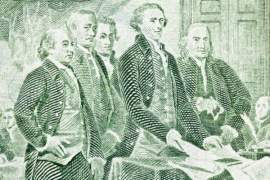
Twenty Sixth Amendment

Popular In Constitution
Purpose Of Lifetime Appointment And Pros And Cons Enumerated Powers Bicameral Legislature Background Article 3 Of The Constitution We The People 1st Amendment Who Wrote The Constitution Judicial Review Equal Protection Clause Three Fifths Compromise 5th Amendment 10th Amendment
The Twenty-Sixth Amendment to the United States Constitution was a result of student activism and demonstrations against the Vietnam War. Even though the age to participate in voting was generally twenty-one, certain states imposed their own requirements for voting age, setting the minimum to eighteen. The 26th Amendment would finally address the voting age concern, and standardized the minimum age requirement to eighteen.
The 26th Amendment would be proposed on March 23rd, 1971, and would be ratified on July 1st of the same year. The 26th Amendment would be the quickest to be ratified in United States history.
The question of a standardized voting age had been
briefly addressed even before the activism would begin against the Vietnam War.
President Dwight D. Eisenhower would be the first president to publicly voice
his opinion, stating his support for lowering the voting age to eighteen.
President Nixon would sign into law an extension of the Voting Rights Act of
1965 that would effectively enact the voting age minimum of eighteen.
On June 22, 1970, President Nixon signed into law the lowering of the voting age to eighteen for all Federal, State, and local elections. However, this new legislation would be challenged by Oregon v. Mitchell, which declared the law unconstitutional on the basis that the Federal Government did not have the authority to set a minimum age requirement for voting in State and local elections.
The argument
of student activists and those supporting the voting age minimum of eighteen
would often cite that if a person is old enough to fight in a war, then that
person is old enough to vote. This was a result of the draft age being lowered
to eighteen by President Franklin D. Roosevelt on the onset of World War II.
The United States Supreme Court, as a result of Oregon v. Mitchell,
would enforce the voting age of eighteen for Federal elections and allowed
eighteen-year-old individuals to vote in the 1972 Presidential and
Congressional elections. However, it maintained that the states would
ultimately decide the voting age minimum individually for their own State and
local elections. This would prove to be somewhat of a situation ripe for
confusion and chaos, for two systems of voting and record-keeping would have to
be implemented and be kept separate for Federal and State elections.
It became clear to the majority of the states that an Amendment proposal by Congress to lower to voting age to a standard of eighteen would provide for a more concise and simple system of voting and elections. Once the 26th Amendment was proposed, it became the quickest to be ratified by the required number of states in U.S. history.


















